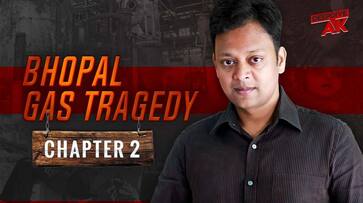Abhinav Khare deep dives into the makings of the Bhopal Gas Tragedy of 1984 and how despite knowledge of its dangers, large quantities of Sevin were produced near densely populated areas
It is the beginning of the 20th century and the countries are now grappling with the destruction of food crops by parasites. These parasites have been creating havoc in the United States, as well as Mexico, Central America and several South American countries, destroying all forms of food crops. In America, four different establishments who were working on producing batteries and arc lamps for street lighting and headlamps for cars come together to form the Union Carbide Corporation or UCC.
UCC was set to make a broad-spectrum pesticide to kill most parasites without damaging overall crop quality. They discovered Sevin which was made from the reaction of phosgene gas and monomethylamine. This reaction produced a compound called methyl isocyanate (MIC). This compound is so poisonous that on contact with a few drops of water it produces a violent reaction. UCC had conducted a study of the effects of MIC on rats but the results were so disastrous that it never got published. MIC had to always be stored in sub-zero temperatures to prevent explosions.
UCC came to India in 1924 and opened a battery assembly plant in Kolkata. UCC had multiple chemical manufacturing plants around the country by 1983. In fact, UCC had a 50.9% stake in its Indian subsidiaries whereas the maximum government mandated stake of a foreign company investing in India was 40%. This exception was given owing to the “sophistication of the technology”. The 1966 agreement between the Government of India and UCIL said that India would start the production of Sevin in five years and this plant would be located in Bhopal. This plant was licensed to produce 5000 tons of Sevin per year. Eduardo Munoz was given the responsibility of this project.
Eduardo Munoz had his objections to this project. He said that such large quantities MIC could spell disaster and should not be produced at one go and should be made in batches. He also objected to the location of the factory being very close to residential areas. But UCIL was hell bent on the 60-hectare plot on the Kali Grounds. The winds in this area directly blew towards the slums surrounding it and the railway station. These were densely populated areas. This was enough reason to reject this application, but UCC never once mentioned that they would be using all possible toxic gases on Earth. By 1979, the plant was inaugurated and work had started. It was in May 1980 when the first batch of MIC was produced and the CEO of the UCC, Warren Anderson visited Bhopal specially for that.
To know what happens next, watch Deep Dive with Abhinav Khare.
About Abhinav Khare
Abhinav Khare is the CEO of Asianet News Network and also the host of a daily show named Deep Dive with AK. He has a lifetime collection of books and gadgets and has already pinged more than hundred cities around the globe.
He is a tech entrepreneur, who is passionate about policy, technology, economy and philosophy from ancient India. He earned an MS Engineering from the ETH Zurich and an MBA Finance from the London Business School.
Last Updated Nov 6, 2019, 7:13 PM IST









![Salman Khan sets stage on fire for Anant Ambani, Radhika Merchant pre-wedding festivities [WATCH] ATG](https://static-gi.asianetnews.com/images/01hr1hh8y86gvb4kbqgnyhc0w0/whatsapp-image-2024-03-03-at-12-24-37-pm_100x60xt.jpg)
![Pregnant Deepika Padukone dances with Ranveer Singh at Anant Ambani, Radhika Merchant pre-wedding bash [WATCH] ATG](https://static-gi.asianetnews.com/images/01hr1ffyd3nzqzgm6ba0k87vr8/whatsapp-image-2024-03-03-at-11-45-35-am_100x60xt.jpg)


